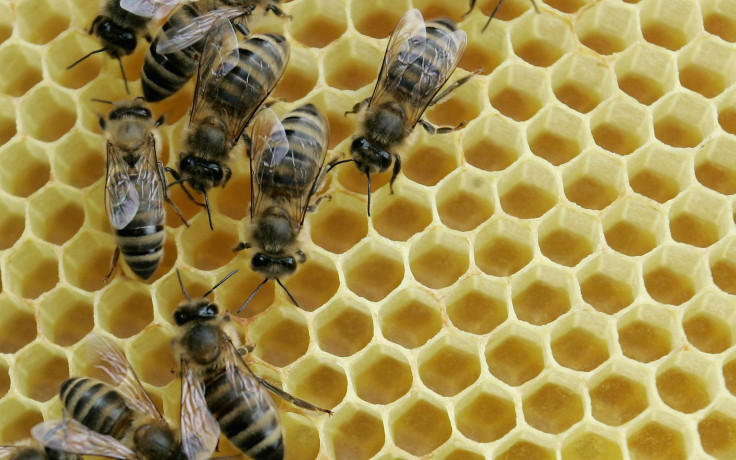What Is Trypophobia? Twitter Freaks Over 'American Horror Story' Poster

Trypophobia is not a well-known phobia, but showrunners behind "American Horror Story: Cult" are triggering fear in fans who suffer from the unusual phobia with the series' season seven promo poster. Some have been affected so much so that they're actively avoiding promotional material for the show.
Have a taste. #AHSCult pic.twitter.com/iLamY55L0C
— AmericanHorrorStory (@AHSFX) August 17, 2017
Trypophobia is best defined as an intense fear of images of irregular holes or bumps. The phobia, which emerged on the internet in 2005, isn't recognized by the American Psychiatric Association's "Diagnostic and Statistical Manual of Mental Disorders." However, it's apparently legitimate to Twitter users who have called the poster an "uncomfortable" and "vile" advertisement.
"H— no this is a real thing, seeing holes like that make me queasy and itchy," one user wrote. "A phobia doesn't always have to be serious, just irrational fear. I blocked the page, I hope I don't see that s— in HDTV."
"Barely able to keep my dinner down but I'm here," another user added alongside a gif of a little girl gagging.
"It's like the only thing that really really bothers me," a third user wrote in a tweet. "It's all because of those jerks who photoshopped dried lotuses on fingertips like 15 years ago."
Photos of the unofficial phobia can be found all over the internet. Images of the lotus seed pod, honeycomb and boiling milk are considered to be natural depictions of the phenomenon. However, a majority of the photographs associated with this phobia are heavily photoshopped, according to Mental Floss. Many trypophobia images incorporate a cluster of holes on human bodies, like the image made popular by "American Horror Story."
Trypophobia, despite how uncomfortable these images are for many, doesn't have enough sufficient evidence to qualify it as a legitimate phobia. A study conducted by Geoff Cole and Arnold Wilkins, both professors at the University of Essex (UE), were the first to investigate the reality of the phobia. Most of their research, in its early beginnings, focused on which images disturbed study participants the most, according to a 2012 report from the Washington Post.
The researchers examined 286 people for the study. About 16 percent of study participants were dissatisfied with the trypophobia-related images, whereas 84 percent didn't find anything wrong with the pictures. An additional experiment was conducted where participants' brain activity was monitored through an MRI scanner as they were showed photographs that could have invoked the fear of holes. At the time, the UE researchers concluded that it was too soon to determine the legitimacy of trypophobia.
Wilkins told BuzzFeed Thursday that there are a few things that provoke a response from sufferers of the phobia. Trypophobia could manifest in an individual's response to avoiding clusters of small holes because they resemble infectious diseases like leprosy, measles or chicken pox. Wilkins also added that the holes resemble the appearance of dangerous things like poisonous plants or snakes. The fear of something dangerous living inside a trypophobia sufferer was a third reason proposed by the professor as cause for the condition.
Follow me on Twitter @dory_jackson
© Copyright IBTimes 2025. All rights reserved.






















